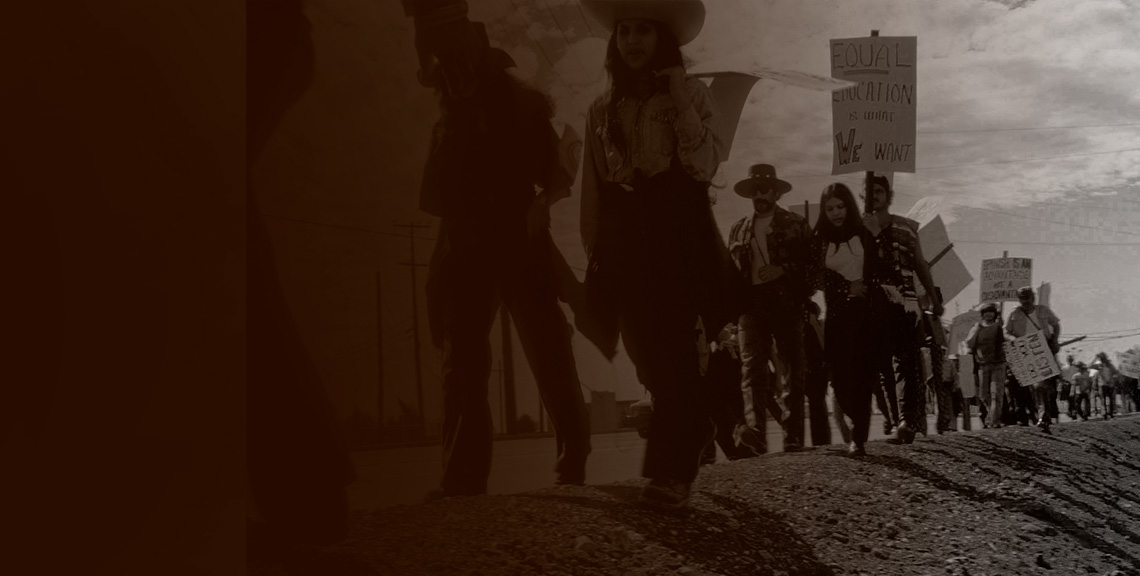
AFTERMATH
From 1920 to 1960, Santa Clara County transformed from being the nation’s largest fruit producer and processor to the center of the high-tech world. In the 1960s and 1970s, large sections of the old Mexican colonias in Mountain View and downtown San José would be demolished through urban renewal, street development, and freeway construction, displacing families and businesses. At the same time the Spanish-surnamed population in Santa Clara County rose from 14 to 21 percent, the largest number of ethnic Mexicans in Santa Clara County living in the Eastside San José colonia with its poor quality housing and inadequate services. Compounding these issues was the replacement of the agricultural economy with an urban, manufacturing/technology driven economy. As canneries closed, cannery workers found themselves losing middle-class incomes and benefits gained through union contracts that had provided them with a level of economic security.
As the economy of Santa Clara County transformed from agriculture to high tech, social changes within the nation during the 1960s and 1970s impacted the County as well. The social justice movements of that period included organizations seeking broad societal change. The Environmental Movement began to link social justice to environmental justice. The Women’s Movement fought for equal rights and equal pay, and the Anti-War Movement questioned the Vietnam War. African Americans, Native Americans and Asian Americans continued the fight against racial disparity through a new Civil Rights Movement, and a new generation of Latinos/Mexican Americans formed the Chicano Movement.
During the 1960s and 1970s, social justice movements were sometimes confrontational, using protests, sit-ins, walkouts, and strikes. New strategies and legal challenges extended the right to vote to 18-year-olds. Policies were adopted by state and local governments that attempted to address the disparities of race, class, gender segregation, housing discrimination, and access to education.
During this time, the Chicano Movement embraced cultural work and practiced political tactics that differed from their civil rights predecessors in the 1920s – 1960s. Two of the leading groups that organized the Mexican American and Latino people were the League of United Latin American citizens (LULAC) and the Community Service Organization (CSO). The CSO focused on integrating them into American society through political reform and legal challenges. In contrast, the new generation of community activists of the 1960s and 1970s embraced a more adversarial approach, promoting cultural nationalism or Chicanismo. This was a generational shift. The new group of leaders chose to affirm their ethnic identity and Mexican cultural heritage rather than pursue a claim of legal equality with the dominant White/Anglo American society. The early ethnic Mexican labor and civil rights struggles in Santa Clara County between 1920 to 1960 established the foundation upon which the Chicano Movement was built.
Note: The term “Chicano” had been used as a slur during the 1930s and 1940s when it was applied to lower class Mexicans. It was reclaimed in the 1940s by young people who identified with the Pachuco/a subculture, and reflected an American identity with roots in Mexican culture. In the 1960s, it was adopted by the Chicano Movement, which sought political empowerment by promoting ethnic solidarity and pride in their southwest indigenous heritage